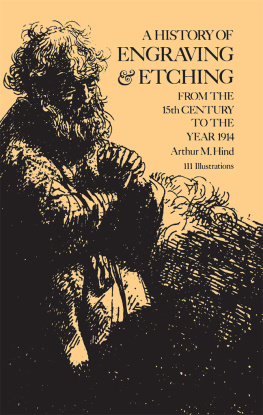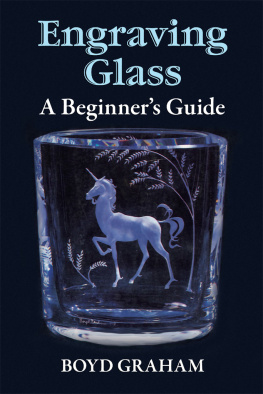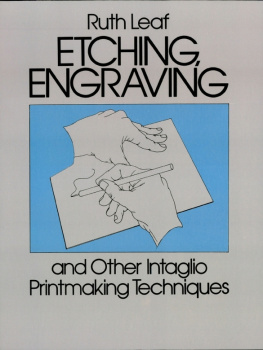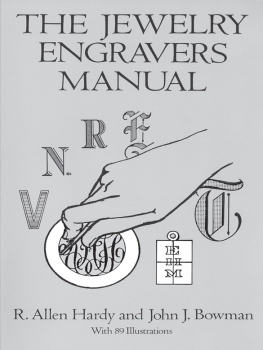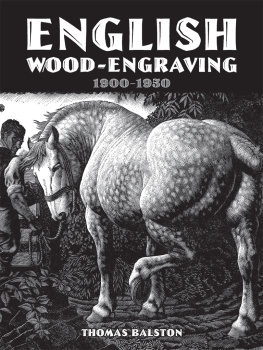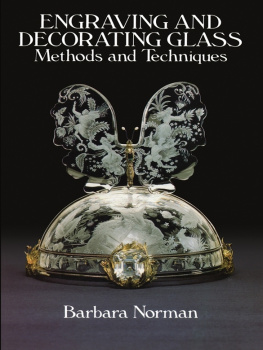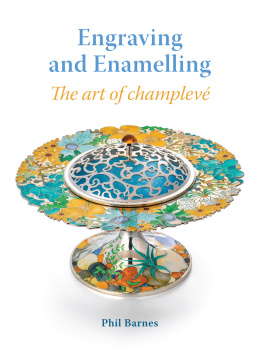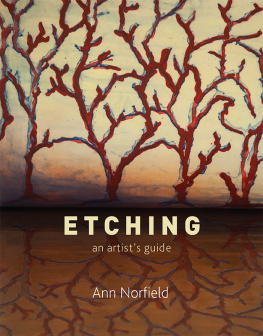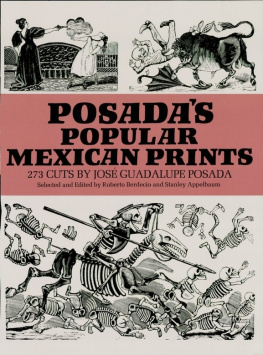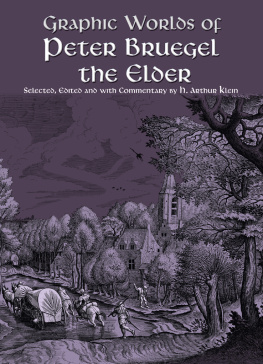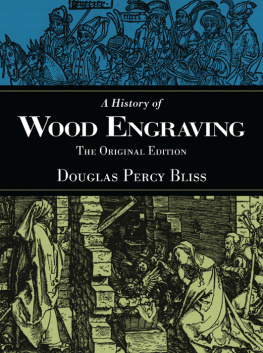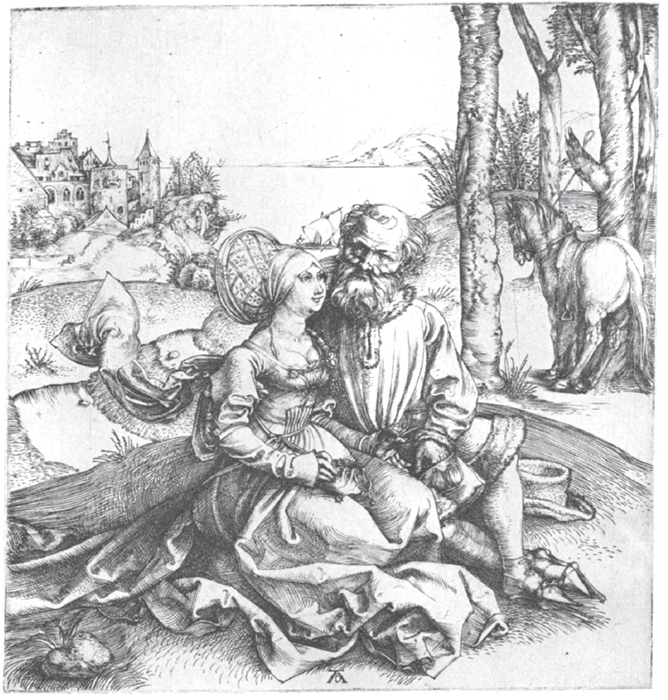
A HISTORY OF
ENGRAVING & ETCHING
FROM THE 15TH CENTURY TO THE YEAR 1914
BEING THE THIRD AND FULLY REVISED EDITION OF
A SHORT HISTORY OF ENGRAVING AND ETCHING
BY
ARTHUR M. HIND
Late Keeper of Prints and Drawings in the British Museum
WITH FRONTISPIECE
AND 110 ILLUSTRATIONS IN THE TEXT
DOVER PUBLICATIONS, INC.
NEW YORK
This new Dover edition, first published in 1963, is an unabridged and unaltered republication of the third, fully revised edition, as published by Houghton Mifflin Company in 1923. The frontispiece was reproduced in photogravure in the 1923 edition.
International Standard Book Number eISBN 13: 978-0-486-14887-8
Library of Congress Catalog Card Number: 63-5658
Manufactured in the United States by Courier Corporation
20954717
www.doverpublications.com
This Dover Edition is dedicated
to the memory of
ARTHUR MAYGER HIND
(18801957)
PREFACE
I OWE a word of apology for augmenting the already extensive bibliography of engraving, and some explanation of the scope of my work may serve to supply it.
It aims, in the first place, at presenting a descriptive survey of the history of engraving on metal throughout the various centuries and schools, considerable space being devoted to the more important engravers, the names of lesser account being cited just so far as they contribute towards a connected view of the whole development, and a balanced estimate of relative artistic values. It is especially in this relation that I feel the importance of the inclusion of a chapter on modern etchers and engravers, who, in books of this kind, have seldom been treated in their natural place beside the older masters. While recognising the greater dangers of personal bias in expressing opinion on the work of living artists, I am strongly opposed to the idea that modern art demands a different and separate treatment.
I have attempted throughout to give references to original sources and best authorities, so that, both for lesser and greater artists, the student may find a sign-post when space precludes direct information.
The General Bibliography, and the Individual Bibliography attached to the Index of Engravers, present a much larger collection of authorities than has been attempted in any similar publication. The technical introduction merely aims at describing the various processes in sufficient detail to help the student, who has made no practice of the art, to a clear comprehension of cause and effect.
A somewhat new feature is formed by the Classified List of Engravers, which has gradually assumed its present shape during the course of my work. Many names of second-rate engravers appear in this section, which would have merely overburdened the text. It is the common fate of compendious lists to be both cryptic and complicated. I cannot think that mine will form an exception, and I am convinced that they will need from time to time both correction and augmentation; but I trust that the system, which has been a gradual development into the simplest form I could devise, may serve as a scientific basis, and find sufficient uses to justify the labour entailed. I have considerable hopes that amateurs and students in many fields of research beside that of engraving may find here the names without which they have no key to the illustration of their particular subject or period. Moreover, a list of engravers, carefully placed in their natural groups, will often lead to the solution of problems of authorship when a dictionary would offer no starting-point. I have included various countries in the Classified List (e.g. America, Sweden, Norway, and Russia) which have hitherto received scant attention in general works on the subject.
In comparison with painting and sculpture, engraving is a cosmopolitan art, the immediate inter-relation of different countries being facilitated by the portable nature of its creations. This consideration is perhaps the strongest argument for the adoption of the great epochs and phases of development as the most logical order for the descriptive survey, though it occasionally entails slight recapitulations. The Classified List of Engravers, being arranged to give a continuous survey under the headings of the different countries, forms in this respect a natural supplement to the order of the historical section.
The Index, which includes over 2500 names, covering all the engravers and etchers cited in the text and classified list, presents, in the most condensed form, dates, places of activity, and individual bibliography, wherever such are known. This section may seem to encroach somewhat on the domain of a dictionary of engravers, but the student who knows the multitude of sources from which reliable information is to be culled, and the difficulty of computing a balance of authority, even after his sources have been consulted, may find some practical utility in the collection. Moreover, many names of living artists are included which are not to be found in any of the dictionaries, the biographical details having been obtained, in many instances, at first hand from the etchers themselves.
The bibliography will show that my indebtedness to the literature of the subject almost precludes specification. Two books, however, I would mention as most nearly allied in scope to the historical portion of my work, i.e. Lippmanns Kupferstich, and Kristellers Kupferstich und Holzschnitt in vier Jahrhunderten. My debt to was of great assistance to me in my introductory chapter. Books such as these have naturally been my constant guides, but a continued study of the original prints, in which detailed research on one or two schools has been seconded by a systematic examination of masses of work of every period, forms the real basis both for my Classified List of Engravers and for the opinions expressed in the text.
In respect of personal help, my greatest debt of gratitude is to Mr. Campbell Dodgson. He most kindly read through the text in manuscript, and the classified lists in proof, giving me numerous suggestions, which his deep and minute knowledge of the subject renders an invaluable service. I would also record the invariable sympathy and suggestion which have been afforded a new member of his own department by Mr. Sidney Colvin. My sincere thanks are also due to Mr. Laurence Binyon for having suggested to me the inception of a most congenial task, and for frequent counsel during the works progress; to Mr. Alfred Whitman for constant assistance in the field of mezzotint, on which he is an acknowledged authority; to Mr. Frank Short for very kindly reading and criticising my technical introduction in manuscript; and to my brother for reading the proofs of the text.
I am indebted to many other friends and acquaintances in England and abroad, both for personal help in study in other print collections, and for much correspondence in answer to repeated queries: among others, to Geheimrath Lehrs of Berlin and Dresden, to Prof. Singer of Dresden (to both of whom I owe a personal debt for something of my initiation in the subject, while studying in Germany some six years ago), to Drs. Weixlgrtner and Drnhffer of Vienna, to Graf. Pckler-Limpurg and Dr. Pallmann of Munich, to Dr. Kristeller of Berlin, to Dr. John Kruse of Stockholm (for many details on Scandinavian engravers), to Monsieur Franois Courboin of Paris, to Professor Henri Hymans of Brussels, to Mr. A. W. Pollard and Mr. Arundell Esdaile (for repeated assistance on matters of bibliography), to Mr. F. M. ODonoghue (particularly in relation to portrait), to Mr. Basil Soulsby, to Mr. R. Nisbet Bain (for advice on the orthography of Russian names), to Mr. Barclay Squire and Mr. Alfred H. Littleton (for matters connected with the engraving of music), to Mr. Martin Hardie, to Mr. T. W. Jackson of Oxford, and to Mr. Charles Sayle of Cambridge.
Next page
